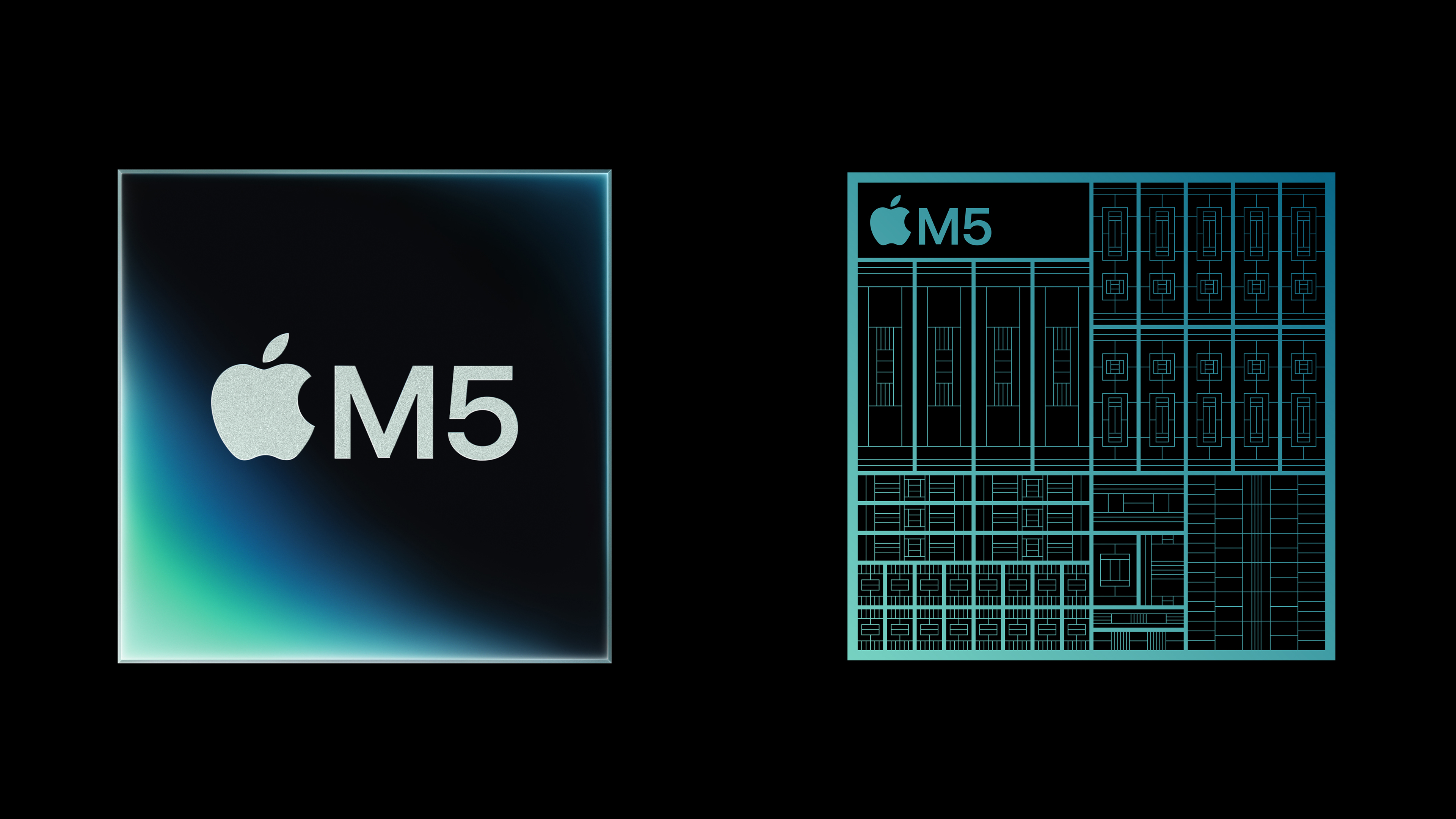Apple M5 chip — everything you need to know
Apple's newest chip promises significant performance and efficiency gains

The Apple M5 chip is set to debut on three new Apple devices this fall. Utilizing an advanced 3nm process for enhanced performance and improved battery life, the new chip is expected to deliver a noticeable boost to the devices it powers.
The new devices in question are the M5 MacBook Pro, M5 iPad Pro, and, perhaps surprisingly, a new Apple Vision Pro. Apple only announced the base M5 chip, with no word on potential M5 Pro and M5 Max chips. Those might come later, but for the moment, the M5 chip boasts some impressive gains, according to Apple.
Here’s everything you need to know about the Apple M5 chip.
Apple M5 chip: Release date and price
The new MacBook Pro, iPad Pro and Apple Vision Pro with M5 will be released starting on October 22.
Right now, you can pre-order the M5 MacBook Pro from $1,599, the M5 iPad Pro from $999, and the Apple Vision Pro from $3,499.
Apple M5: Graphics
Thanks to the new GPU and enhanced shader cores in M5, devices featuring the chip will have increased graphics performance, with up to 30% faster performance compared to M4 and 2.5x faster performance than M1.
The M5 chip also has a third-gen ray tracing engine, which Apple says can provide up to 45% graphics uplift in apps that use ray tracing, such as video games. When combined with the rearchitectured second-gen dynamic caching, the GPU promises to deliver smoother gameplay and more realistic 3D visuals. The chip will also allow for faster rendering times for video projects and video games.
Get instant access to breaking news, the hottest reviews, great deals and helpful tips.
Apple M5: Enhanced AI
Apple says every compute block of the M5 chip has been optimized for M5, thanks to the chip’s new GPU architecture.
The 10-core GPU features a dedicated Neural Accelerator in each core, which can deliver over 4x peak GPU compute compared to M4 and over 6x peak GPU compute for AI performance compared to M1, according to Apple. These advancements will enable the new 14-inch MacBook Pro and iPad Pro to have accelerated processing for AI-driven workflows right on the devices.
The new 16-core Neural Engine promises to deliver better and more energy-efficient AI performance, which will complement the Neural Accelerators in the CPU and GPU to make the chip better optimized for AI workloads. Naturally, the Neural Engine will also enhance performance for Apple Intelligence. You’ll be able to use apps like Image Playground right on the device, with better performance than in M4.
Apple M5: Enhanced memory
Apple says the M5 chip has unified memory bandwidth of 153GB/s, which is a nearly 30% increase over M4 and more than twice that of M1. The new architecture lets the entire chip access a large single pool of memory. This lets the chip run larger AI models right on the device. This also powers faster CPU, GPU, and Neural Engine, allowing for higher multithreaded performance in apps, such as video editors and games.
With up to 32GB of memory capacity, the M5 chip can also help you run demanding apps like Adobe Photoshop and Final Cut Pro at the same time, while you’re uploading large files to the cloud in the background. If you’re a professional creative, this will certainly speed up your workflow.
Apple M5: Outlook
The Apple M5 chip promises to deliver big gains over previous M-series chips. It's also clear Apple is leaning heavily on the chip's Neural Engine capabilities. Based on what we've seen, video editors and gamers will benefit heavily from the enhanced graphics. And if you frequently use AI, you should also enjoy a smoother experience.
We’ll need to test the Apple M5 chip ourselves to see if Apple’s claims are true. With devices releasing on November 22, it won't be long until we can get them into our testing lab to see what the M5 chip can really do under heavy workloads and for everyday work.
Follow Tom's Guide on Google News and add us as a preferred source to get our up-to-date news, analysis, and reviews in your feeds. Make sure to click the Follow button!
More from Tom's Guide
- Apple TV+ is getting a rebrand, and this could get confusing
- iPhone 17 vs iPhone Air: Which new iPhone should you buy?
- I just discovered what’s really draining your iPhone battery — and it’s not what you think

Tony is a computing writer at Tom’s Guide covering laptops, tablets, Windows, and iOS. During his off-hours, Tony enjoys reading comic books, playing video games, reading speculative fiction novels, and spending too much time on X/Twitter. His non-nerdy pursuits involve attending Hard Rock/Heavy Metal concerts and going to NYC bars with friends and colleagues. His work has appeared in publications such as Laptop Mag, PC Mag, and various independent gaming sites.
You must confirm your public display name before commenting
Please logout and then login again, you will then be prompted to enter your display name.
